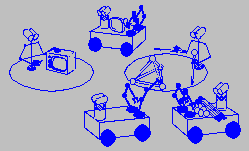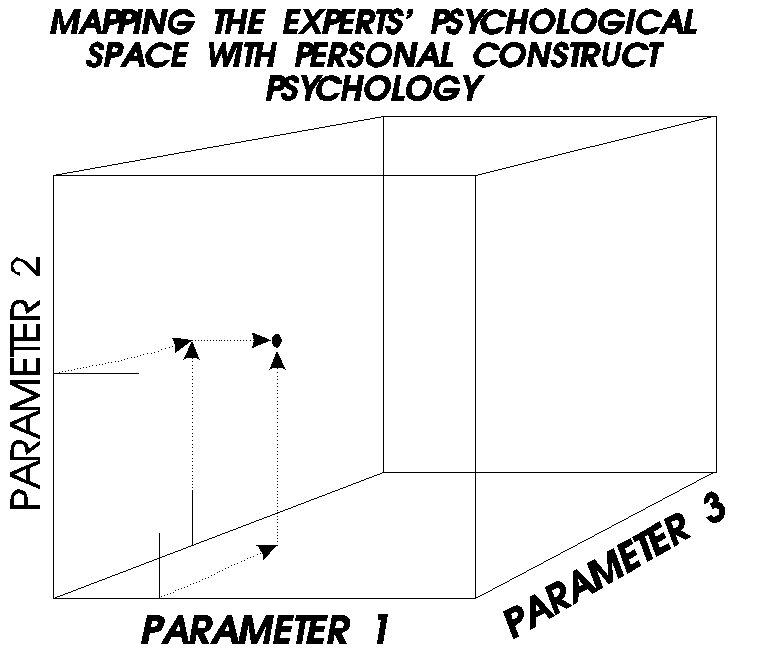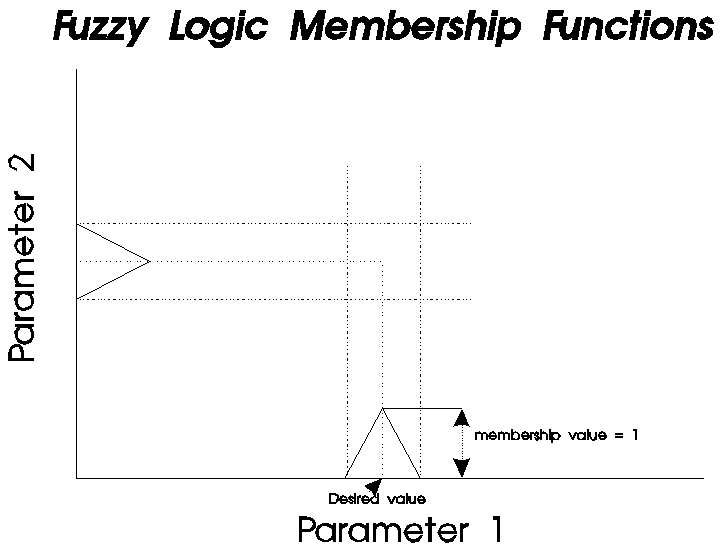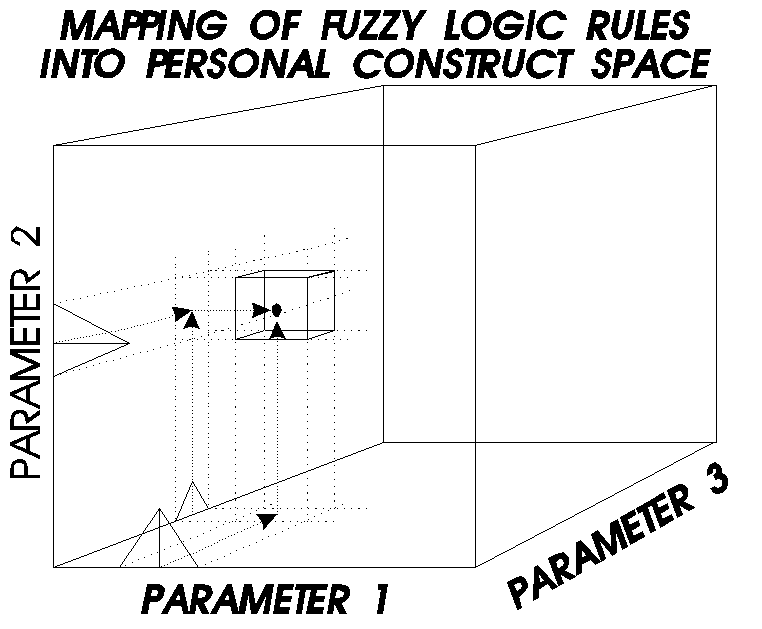



Personal Construct Psychology states that people build a conceptual space using constructs to form a coordinate system for our experience:
This project is attempting to duplicate the psychological space of Wing Chuin artists. We have achieved following two things in this regard:
We have defined the coordinate system of Tactical Strategy Selection. The next step is to populate this space with tactical strategy elements. These elements have already been named in the operational map made by Anthony. They are stated as "weapons deployment", "decoying", "evasion" and "engagement". These must now be placed within the Tactical Strategy Selection space.
Simply placing points in this space will not suffice. Doing so amounts to saying that the robot will not move unless it experiences exactly the same parameter values described by points in space. For instance, this could mean that the opposing robot must be exactly five inches away, closing at five meters per second and is ten inches wide before the command to move to the left ten inches is ever activated! This would effectively render the robot motionless for its sumo wrestling career, except for those completely serrendipitous occasions when the opposing robotmeets these precise requirements. Kelly's psychological space must be made to broaden the expected results that populate it.

Lotfi Zedah and fuzzy Logic provide a solution. In placing a point in the psychological space, we are essentially using conventional logic, and declaring that that point either becomes instantiated (all constructs equal the precise values to describe that point in space) or it doesn't (some or all of the parameters do not meet the necessary criteria). Conventional logic states that A cannot be not-A at the same time. Or another way of stating this is to say that something must either be a member of a set or not. There are no in-betweens. Fuzzy logic allows membership in degrees and so it is possible for something to be both a member of A and not-A simultaneously. This translates to an "n-dimensional volume" defined in our psychological space. This area now covers a broader range of possibilities. This is what would be expected in the real-world, where the multitude of variables affecting the situation are too numerous to be successfully anticipated. Living organisms accept "close" or "just about" results naturally, in order to function. This innate organic ability can theoretically be simulated by "fuzzy" volumes in our parametric psychological space.

The aim of the next phase of the process must be to define "n-dimensional volumes" in the experts' psychological spaces. Using the derived elements found in this phase, the axes of the Tactical Strategy Selection space can be defined. I feel it is the elements that define the space's axes because of their measurable nature, such as "lead time" and "line of engagement". This causes some confusion regarding whether these concepts are elements or constructs. Can the definitions "element" and "construct" fade together into unity, or is there some definite distinction between them?
This confusion could point to an error in the chosen context of the elicitations. Perhaps the elicitations should have been in the following context: How are the following elements related with respect to "weapons deployment", "evasion", "decoying" and "engagement". Whether error or a result of some relationship between elements and constructs this is the obvious step for the next phase. The elements, "weapons deployment", "decoying", "evasion" and "engagement" must now be placed, not as points but as "n-dimensional volumes" within this space. This will be done by focusing on the elicitation of ranges within which these tactics apply. For example, "engagement" may be a valid option when "Lead Time" is "short to medium". "Evasion" may only be a valid option when "Lead Time" is "short" to "very short".
